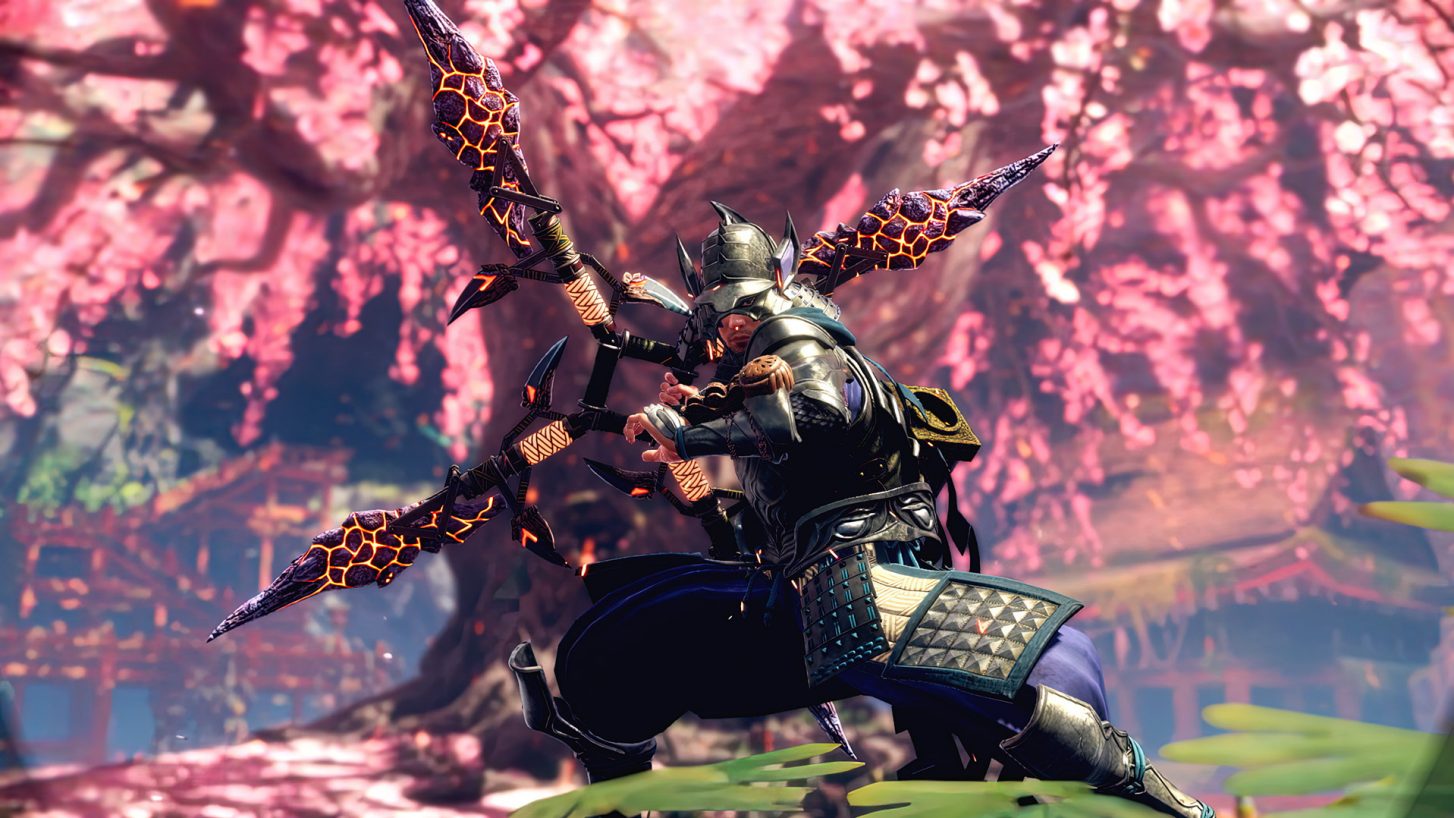Wild Hearts’ Karakuri took a lot of trial and error, explains game director
Feedback wasn't kind to the Karakuri early on

A major element of Wild Hearts is arguably its most intimidating. The Karakuri are presented to the player as simple building blocks, tools with which they can build up traps like gigantic mallets to whack the monstrous Kemono, or springboards to dive out of the way of attacks at the last second.
For developer Omega Force, the Karakuri represented a major obstacle. The studio deliberately designed the feature to set Wild Hearts apart from its hunting game contemporaries - looking to rivals like Capcom’s Monster Hunter to see what they could do differently - but found that the process of trial and error for the Karakuri resulted in a lot more, well, error.
“In the beginning, [the Karakuri] was more difficult and more complicated than how it is now,” Wild Hearts director Kotaro Hirata tells GamesRadar+. The slow nature of setting up the Karakuri led to plenty of debate about how Omega Force could speed up and simplify the entire process, Hirata says, and it’s thanks to these discussions that the Karakuri are now intrinsically linked to the gameplay of Wild Hearts.
Frustrating foundations
Now, when we played Wild Hearts in our preview earlier this year in October, the process of establishing the Karakuri devices is simplistic by nature. Presented with just four base options, Wild Hearts prompts the player to experiment with linking Karakuri like blocks and springs together to create Fusion Karakuri, the final result of mixing the base building blocks to create something that’ll really turn the tide of battle.
Presenting the player with just four base options again came from internal debates at Omega Force. “I think one of the biggest differences between the Karakuri then and now is that we originally tried to set them up more freely,” Hirata explains, adding that because of this “free” nature, the Karakuri just took too long to establish on the battlefield. In limiting the player to just four base building blocks, the act of constructing the Karakuri was immediately sped up.
Another problem arose from the Karakuri’s origins as a crafting element. Hirata and company originally envisaged some sort of crafting element accompanying the action of battling monsters in Wild Hearts, but difficulty arose when attempting to tie in the actions of crafting something to the chaotic battles with the beastly Kemono.
“After having the idea of Karakuri as crafting elements, there were mainly times when we were focusing on battling these wild animals,” Hirata says. Discussions then arose on how they could link the two features together, which in turn led Omega Force to gear the Karakuri more towards combating and dealing with the Kemono, rather than being a crafting element entirely separated from combat.
Weekly digests, tales from the communities you love, and more
“In the beginning we tried to guide players into using traps and getting into fights with enemies,” Hirata continues. “I think one of the most important elements about hunting games is how big enemies combat with the player, so this is why we had some feedback about our Karakuri elements not being well incorporated enough into the battling,” the Wild Hearts director adds.
One of these base Karakuri is a simple box. The player can utilize these simple boxes however they want, whether it be building a gigantic wall to stop a raging Kemono in its tracks, or rapidly assembling a small tower to nimbly hop over an outstretched claw. The boxes can then have other Karakuri attached to them, such as the spring, to assemble a springboard to deftly dodge attacks.
It’s this plain old box that Omega Force began development of the Karakuri with. “When we had this discussion about what Karakuri we could create and provide for the player, we started with this box,” says fellow game director Takuto Edagawa. For Hirata, the basic box is not only his personal favorite Karakuri, but also the moment at which he knew Wild Hearts could work as a concept, and that players would latch onto the new hunting game.
Wild Hearts launches next year on February 17, 2023, for PC, PS5, and Xbox Series X/S as a new-gen console exclusive.
Hirun Cryer is a freelance reporter and writer with Gamesradar+ based out of U.K. After earning a degree in American History specializing in journalism, cinema, literature, and history, he stepped into the games writing world, with a focus on shooters, indie games, and RPGs, and has since been the recipient of the MCV 30 Under 30 award for 2021. In his spare time he freelances with other outlets around the industry, practices Japanese, and enjoys contemporary manga and anime.



